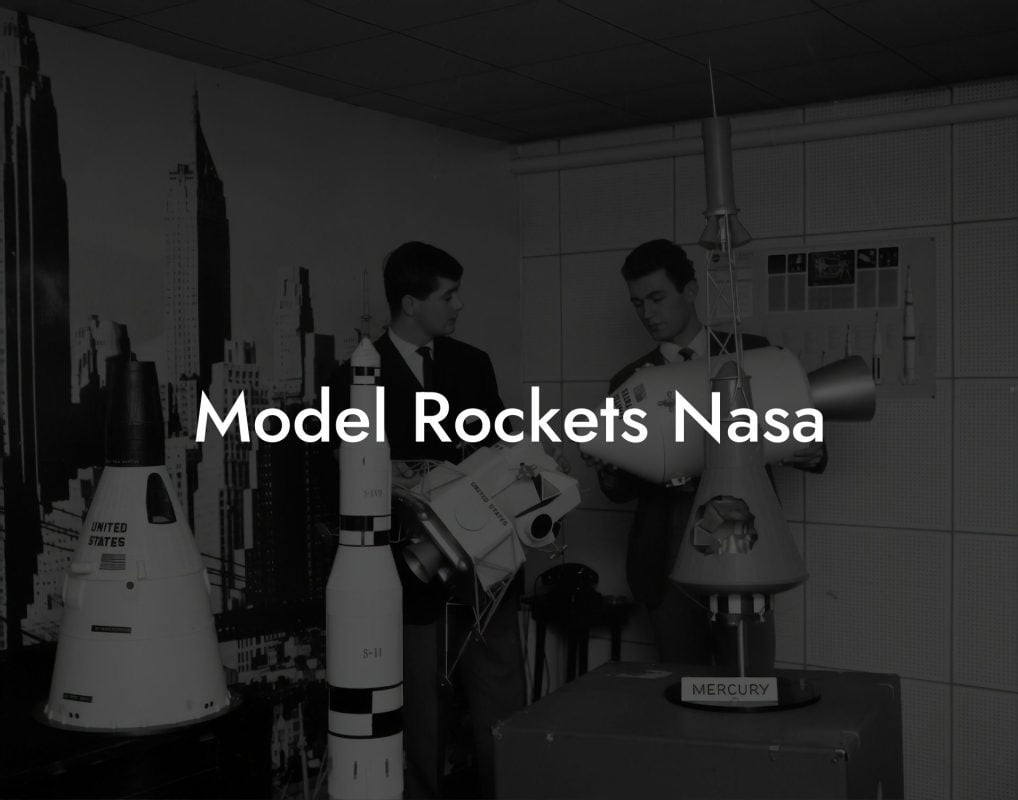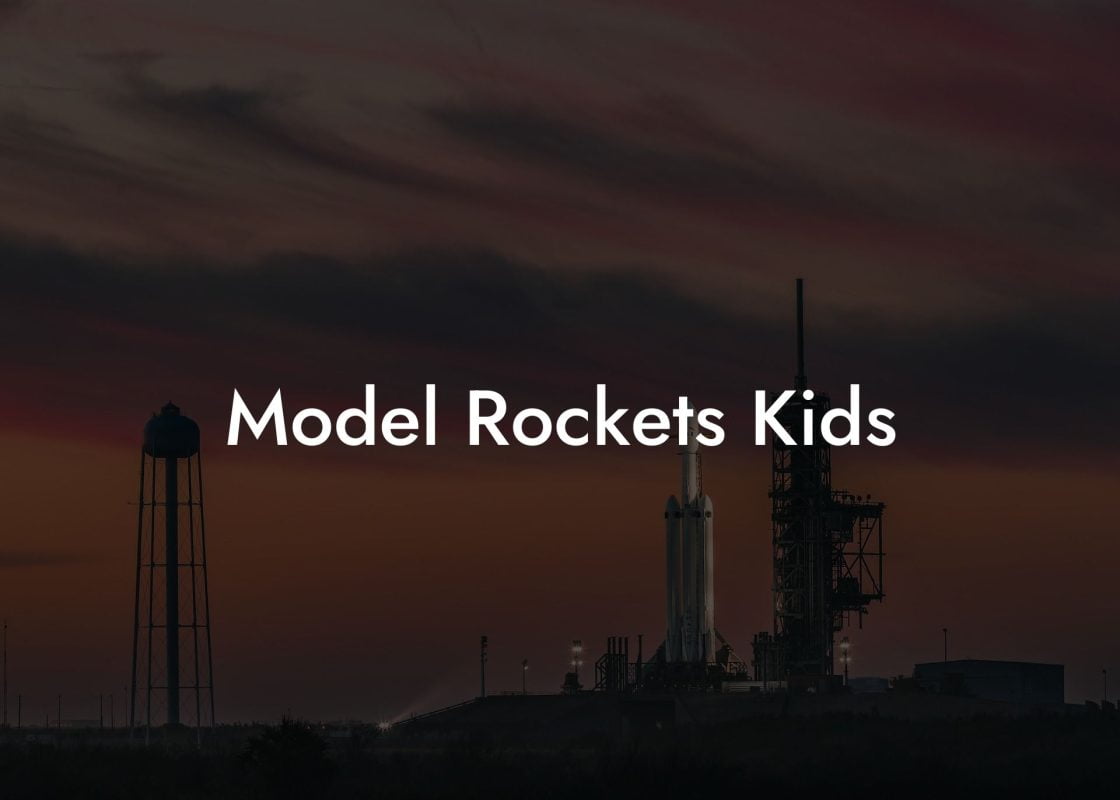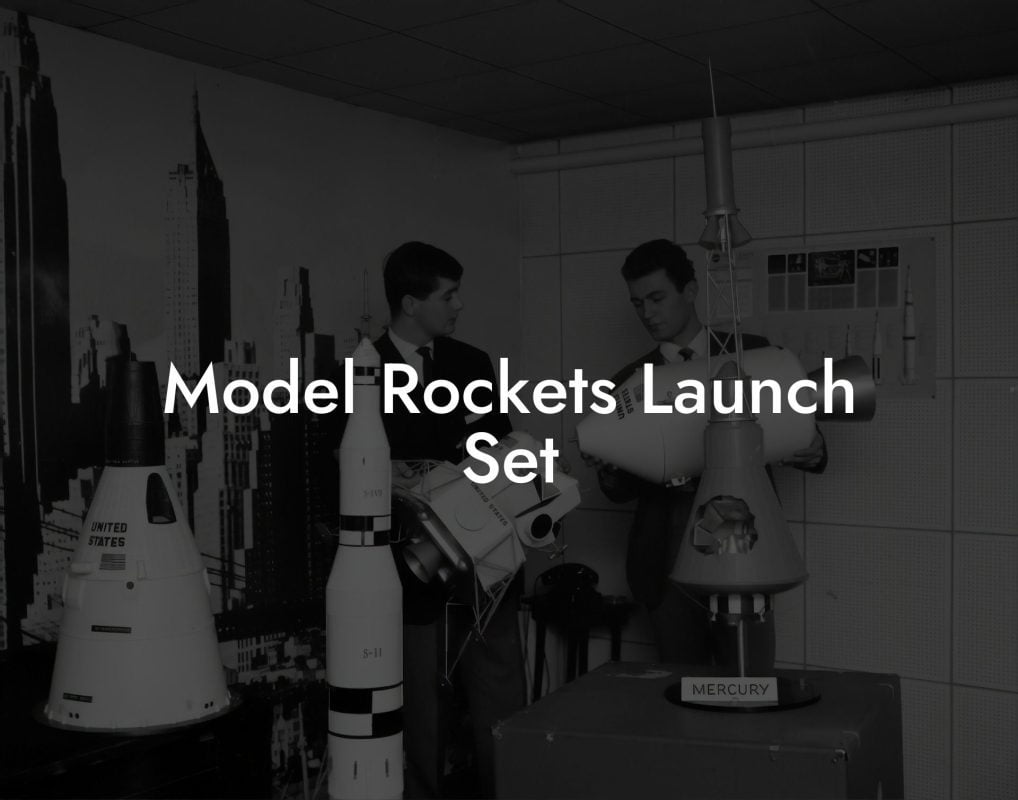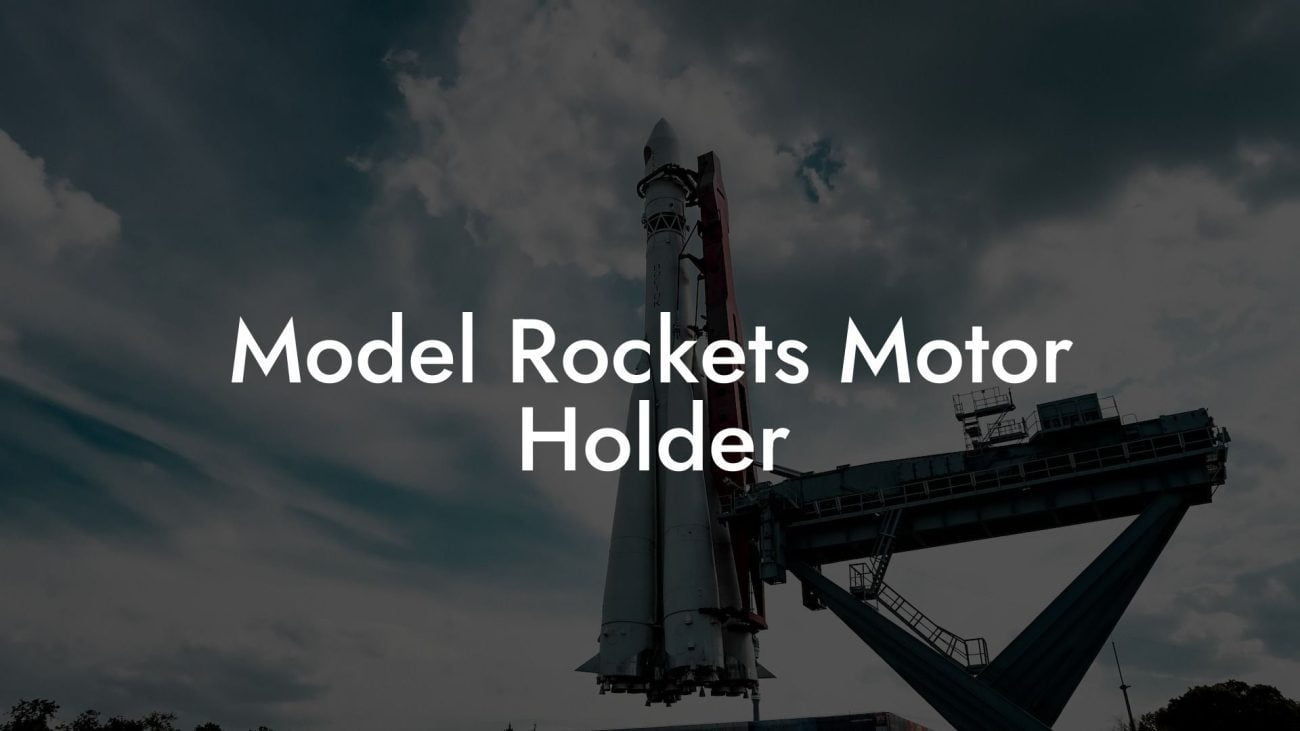Imagine the rush of watching your very own Estes model rocket soar into the sky, leaving a trail of excitement and wonder in its wake. Whether you're a seasoned enthusiast or just starting out, the world of model rocketry is a thrilling adventure waiting to happen. In this comprehensive guide, we'll take you on a journey to explore the art of launching Estes model rockets, covering everything from the basics to expert-level tips and tricks.
Quick Links to Useful Sections
What Is Model Rocketry, and Why Is It So Awesome?
Model rocketry is the hobby of designing, building, and launching miniature rockets, often powered by small motors. It's a fascinating blend of science, technology, engineering, and mathematics (STEM) that sparks imagination and creativity. With Estes model rockets, you can experience the thrill of space exploration from the comfort of your backyard or a nearby open field.
So, what makes model rocketry so awesome? For starters, it's an incredible way to learn about physics, aerodynamics, and engineering principles in a hands-on, interactive way. You'll develop problem-solving skills, critical thinking, and creativity as you design, build, and refine your rockets. Plus, it's an amazing way to spend quality time with friends and family, sharing in the excitement of launch day.
Getting Started with Estes Model Rockets: A Beginner's Guide
If you're new to model rocketry, don't worry – we've got you covered. Here's a step-by-step guide to help you get started with Estes model rockets:
- Choose Your Rocket: Select a starter kit or a pre-assembled rocket that suits your skill level and interests. Estes offers a range of options, from beginner-friendly models to more advanced designs.
- Understand the Basics: Familiarize yourself with the components of a model rocket, including the motor, recovery system, and electronics. Learn about safety guidelines and best practices for launching and recovering your rocket.
- Assemble and Prepare Your Rocket: Follow the manufacturer's instructions to assemble your rocket. Make sure to inspect your rocket for any damage or defects before launch.
- Find a Safe Launch Site: Look for a wide, open area with minimal obstacles and no overhead power lines. Ensure you have permission to launch in the chosen location.
- Launch and Recover Your Rocket: With your rocket assembled and your launch site ready, it's time to blast off! Follow safety guidelines and use a launch pad to ensure a smooth, safe launch. Recover your rocket after it returns to Earth, and get ready to do it all again.
Tips and Tricks for Expert-Level Model Rocketry
Once you've mastered the basics, it's time to take your model rocketry skills to the next level. Here are some expert tips and tricks to help you refine your craft:
Looking For The Best Model Rocket Kits? You'll Love These:
- Customize Your Rocket: Experiment with different materials, designs, and components to create a truly unique rocket. Consider adding custom paint jobs, decals, or other personal touches.
- Optimize Your Motor Selection: Choose the right motor for your rocket, taking into account factors like thrust, duration, and recovery. Experiment with different motor combinations to achieve the perfect flight.
- Master the Art of Recovery: Develop a reliable recovery system to ensure your rocket returns safely to Earth. Experiment with different parachute designs, materials, and deployment systems.
- Join the Model Rocketry community: Connect with fellow enthusiasts online or in-person to share knowledge, learn from others, and stay up-to-date on the latest trends and innovations.
Resources and Community Support: Your Next Steps
As you continue to explore the world of model rocketry, it's essential to stay connected with the community and access valuable resources. Here are some next steps to help you on your journey:
- Estes Model Rockets Website: Visit the official Estes website for tutorials, FAQs, and resources on model rocketry.
- Model Rocketry Forums and Groups: Join online forums, social media groups, and local clubs to connect with fellow enthusiasts, ask questions, and share your experiences.
- Local Hobby Shops and Suppliers: Support local businesses that cater to model rocketry enthusiasts, offering expert advice, parts, and accessories.
- Attend Model Rocketry Events: Participate in local launches, competitions, and workshops to learn from others, showcase your skills, and have fun.
Frequently Asked Questions: Model Rocketry 101
Got questions about model rocketry? We've got answers! Here are some frequently asked questions to get you started:
1. What is the minimum age requirement for model rocketry?
While there's no specific age limit, it's recommended that children under 12 years old have adult supervision when launching model rockets.
2. Are model rockets safe?
Yes, model rockets are safe when used properly and with caution. Always follow safety guidelines, use protective gear, and launch in a safe, open area.
3. How high can model rockets fly?
The altitude reached by a model rocket depends on the motor, design, and weather conditions. Some rockets can reach heights of over 1,000 feet (305 meters).
4. Can I customize my model rocket?
Absolutely! You can customize your rocket with different materials, designs, and components to make it truly unique.
5. How do I recover my model rocket after launch?
Use a reliable recovery system, such as a parachute or streamer, to ensure your rocket returns safely to Earth.
Looking For The Best Model Rocket Kits? You'll Love These:
Useful Interruption: Dive deeper into the world of Model Rockets with our most popular sections. If there is anything you think is missing or anything you would love for us to write about, just give us a shout.
- Getting Started & Basics With Model Rockets
- Model Rocket Design, Build & Customization
- Model Rocket Propulsion & Engine Technology
- Model Rocket Launch Techniques & Recovery
- Model Rocket Advanced Rocketry & Innovations
- Model Rocket DIY and Customization
- Model Rocket Equipment Reviews & Digital Tools
- Community, Competitions & Education
- Model Rocket Troubleshooting & FAQs
- Model Rocket Bonus/Seasonal & Niche Topics
A group of model rocket enthusiasts gathered at a field for their weekly launch event. Among them was Dave, a seasoned builder known for pushing the limits of hobby rocketry. This time, he had outdone himself.
“Ladies and gentlemen,” Dave announced, dramatically pulling a cloth off his latest creation, “I present to you: The Kraken!”
The crowd gasped. This wasn’t just a model rocket, it was a monster. The thing stood 8 feet tall, had six clustered engines, and was covered in enough duct tape to qualify as a classified aerospace project.
“Dave,” muttered Steve, the cautious safety officer, “Have you, uh… done the math on this?”
“Math?” Dave scoffed. “I built it in my garage at 3 a.m. with parts from eBay. This is an art piece, Steve.”
The countdown began.
5…
4…
3…
2…
1…
The engines ignited with a BOOM, and The Kraken shot up… kind of. It immediately did a violent barrel roll, narrowly missing the spectators before skyrocketing at an angle that could only be described as “legally questionable.”
The crowd collectively ducked as The Kraken flew straight over the adjacent cornfield, where Old Man Jenkins, the grumpiest farmer in town, was minding his business.
KABOOM!
The rocket disappeared behind the barn. A moment later, a flaming piece of Estes igniter wire landed at Steve’s feet. The silence was deafening.
And then, an unmistakable sound echoed across the field.
Jenkins’ shotgun being cocked.
“DAVE!!!” Steve shouted. “RUN.”
And that was the day Dave invented the first-ever biologically powered rocket booster: pure adrenaline.
To this day, nobody knows where The Kraken landed, but legend has it, it still haunts the skies, terrifying unsuspecting drones and low-flying birds.















